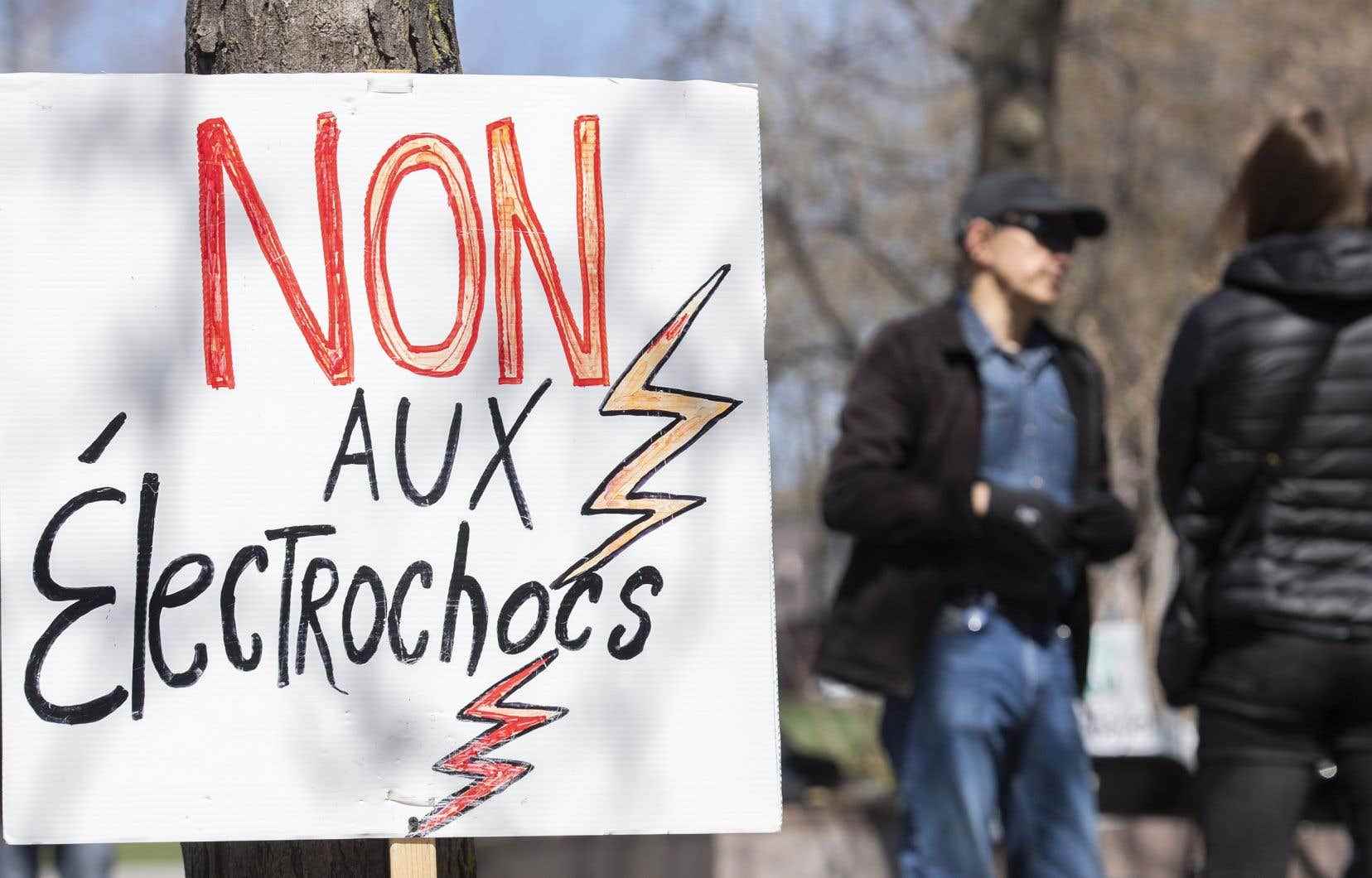A rally took place Saturday morning at Place Émilie-Gamelin, in Montreal, to demand the abolition of electroshock therapy in psychiatry. This demonstration takes place on the occasion of Mother’s Day, because according to the organizers, two thirds of electroshocks are given to women.
According to data shared by the Pare-chocs committee, a group of organizations campaigning for the abolition of electroshock in Quebec, 50% of electroshock would be given to women aged 50 and over and 41% to people aged 65. and more. Nearly 10% would be administered to women aged 80 and over.
The group indicates that Quebec has gone from 4,000 electroshock sessions in 1988 to more than 11,000 in 2017. The spokesperson for Pare-chocs, Ghislain Goulet, claims that electroshocks be abolished. In the short term, he wants this treatment to be placed under “high surveillance” and to be the subject of public debate.
The coordinator of the Network of Regional Tables of Women’s Groups in Quebec, Marie-Andrée Gauthier, denounces that women are more targeted in electroshock treatments.
“In 2022, not only are electroshock still being used in some hospitals in Quebec, but women are still overrepresented,” says Ms. Gauthier.
She believes that the electroshocks administered to these women without their free and informed consent are part of a continuum of gendered violence.
It was the 14and time this event was taking place. The event had taken a two-year hiatus due to the pandemic.
The executive director of the Association of Intervention Groups in Defense of Health Rights in Quebec, Doris Provencher, said she was exasperated at repeating the same message to the government year after year. “I’m tired of always coming here and hitting the same nail,” she said.
Electric shocks to an 82-year-old lady
Last March, a judgment of the Superior Court of Quebec authorized a hospital center in Abitibi-Témiscamingue to subject an 82-year-old woman, against her will, to a maximum of twelve sessions of electro convulsive therapy (electroshock). .
The ordinance also provides for chemical or physical restraint measures in the event of physical opposition “in order to ensure his safety or that of others”. The lady could therefore be attached, for example, to receive the treatment.
Doris Provencher believes that this is a flagrant case of abuse. “In Quebec there is a law on mistreatment […] and when you find yourself with a treatment order like the lady from Abitibi, you are in a vulnerable situation,” she denounces.
The causes that led to the octogenarian’s state of distress are not specified in the order.
Unrecognized issue
Dozens of demonstrators were present on Saturday hoping that their message will be heard by the Government of Quebec, but they especially want to raise awareness about this little-known technique which is increasingly practiced.
Ghislain Goulet mentions that although there are quantitative statistics on the number of electroshocks administered, there is “no follow-up on this risky and controversial technique”. It is not known, for example, if deaths are linked to this treatment, he says.
“We want to be heard by the public. Most people think it’s been gone since the 1950s, but it’s not. It is even expanding. We want to raise public awareness of this technique, which still exists,” says Mr. Goulet.
The latter also denounces the disparities in the number of times electroshock therapy is used in psychiatry between the different regions of Quebec.
According to data from the Régie de l’assurance maladie du Québec (RAMQ), Centre-du-Québec is the sector that most often resorts to this practice. More than 1,550 electroshocks were performed in 2019, a rate of 6.5 per 1,000 inhabitants, which is about six times higher than the average for all of Quebec, which is 1.5.
